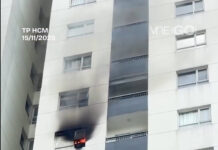Wall cracks are not a quick occurrence but rather the consequence of a long-term impact. If left untreated, it can lead to leaks, pest infestations, and more. So, what causes this, and how can we fix it?
1 Reasons for Wall Cracks
Temperature and Weather Conditions
 Wall cracks due to temperature and weather conditions
Wall cracks due to temperature and weather conditions
Vietnam’s tropical climate with seasonal monsoons causes expansion when hot and contraction when cold. This leads to sudden wall contractions and expansions, resulting in cracks. Additionally, intense heat accelerates water evaporation from building materials, causing them to shrink and leading to horizontal and vertical wall cracks.
Weak Foundation
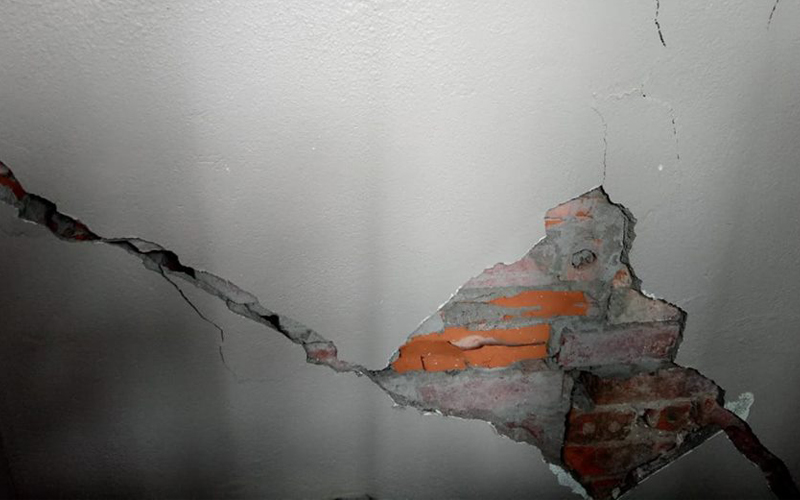
The foundation is the most critical part of a house, determining the structure’s longevity. Therefore, when building on weak soil, choosing a robust foundation system is essential. Otherwise, the quality of the structure will be severely affected, and wall cracks will appear.
Poor Painting and Plastering
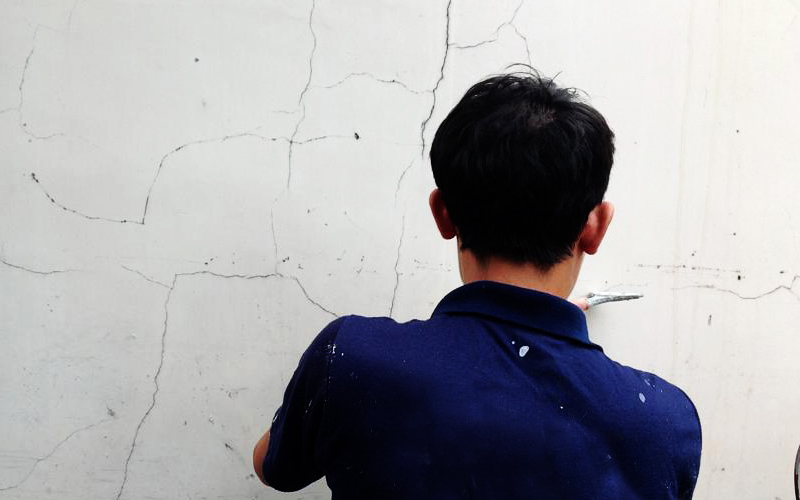
Substandard painting and plastering are considered the main causes of horizontal wall cracks. Typically, these cracks occur where the plaster layer does not meet the standards, and the ceramic and concrete bricks are not aligned.
Aging

Everything has a lifespan, and walls are no exception. As a structure ages, the columns, beams, foundation, and bricks will deteriorate, leading to understandable horizontal cracks.
External Forces
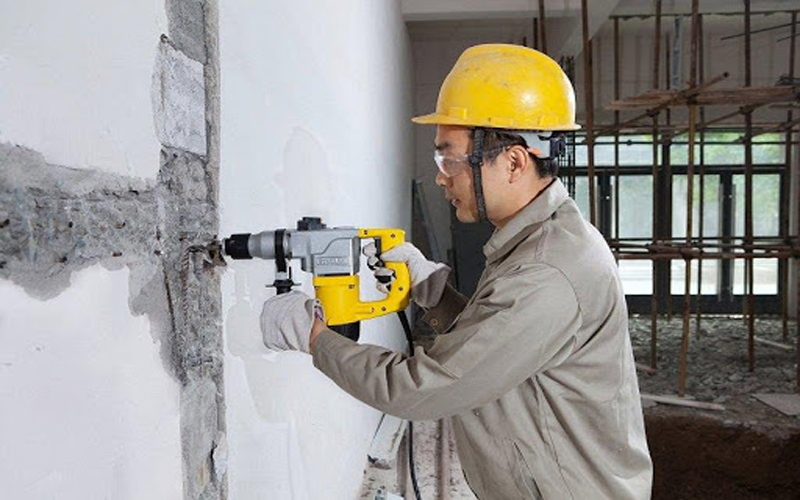
External forces, such as hammering or improper wall drilling, can cause rapid wall cracks, even in newly constructed buildings. These cracks typically appear at door edges and can be easily fixed.
2 Ways to Fix Wall Cracks
For Small Cracks (Hairline Cracks)
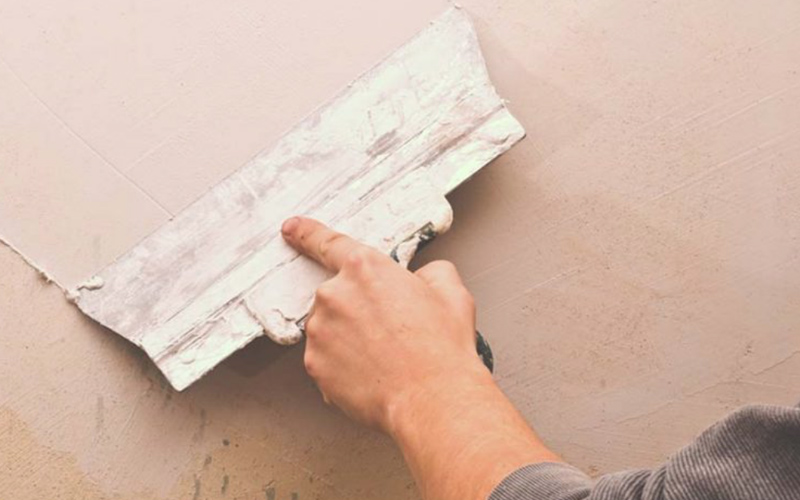
This is a basic case, occurring in the plaster layer. They usually appear when the painting and plastering techniques are not up to standard. You can easily fix these yourself by following these simple steps:
– Chisel along the hairline crack on the wall to remove the old plaster.
– Clean the area thoroughly.
– Moisten the area with clean water.
– Fill the crack with a mixture of cement and fine sand.
– Wait for 7–10 days before repainting and replastering the wall.
For Large Cracks
Large cracks are dangerous as they can quickly spread to other areas and walls. We must address them promptly by filling the cracks with mortar to create a smooth wall surface.
Next, apply a powder layer and a layer of alkali-resistant paint. Besides this simple method, you can choose other options according to your budget:
1. Fill Cracks with Monos Repair Mortar

- Application: Old cracks that are no longer active.
- Advantages: Uniform concrete material, easy to cover with paint to hide repairs.
- Disadvantages: Non-elastic; if the structure cracks again, new cracks may appear along the repair line.
- Construction: Widen the crack, clean and dampen it. Fill the crack with Monos repair mortar, level it, and paint once dry.
2. Fill Cracks with Flex Glue

- Application: Active cracks that may continue to expand.
- Advantages: Elastic; can cover wider cracks up to a certain limit.
- Disadvantages: Visible repairs may affect aesthetics.
- Construction: Widen the crack, clean and dry it. Fill the crack with glue, level it, and sand if necessary before painting.
3. Fill Cracks with PU Glue

- Application: Active cracks that may continue to expand and require waterproofing.
- Advantages: Elastic; can cover wider cracks.
- Disadvantages: Only for indoor use. High cost and labor intensity. Not suitable for cracks smaller than 1 mm.
- Construction: Drill holes, insert special bolts, and fill the cracks. Inject glue from the bottom up using a pressure pump. Cut the bolts once the glue is dry, then paint.
4. Apply an Elastic Membrane to Cover the Cracks
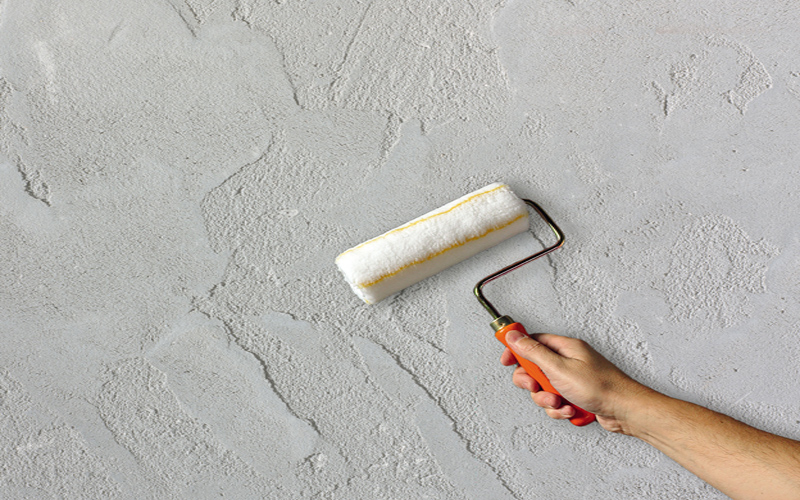
- Application: Active cracks that continue to expand.
- Advantages: Quick and easy application.
- Disadvantages: High cost if applied to the entire wall. Only effective with UV-resistant materials.
- Construction: Grind and clean the wall surface. Use a suitable mesh with the membrane material. Apply two coats of the membrane perpendicular to each other, or roll or spray it on. Paint once dry.
5. Use Wall Panels to Cover the Cracks

- Application: Indoor use.
- Advantages: Quick and easy installation at a reasonable cost.
- Disadvantages: May affect aesthetics and pose health risks.
- Construction: Simple panel installation and assembly.
The above are solutions for minor to moderate wall cracks. However, if the cracks are extensive and complex, it is best to consult a professional or a construction company instead of attempting to fix them yourself.



























